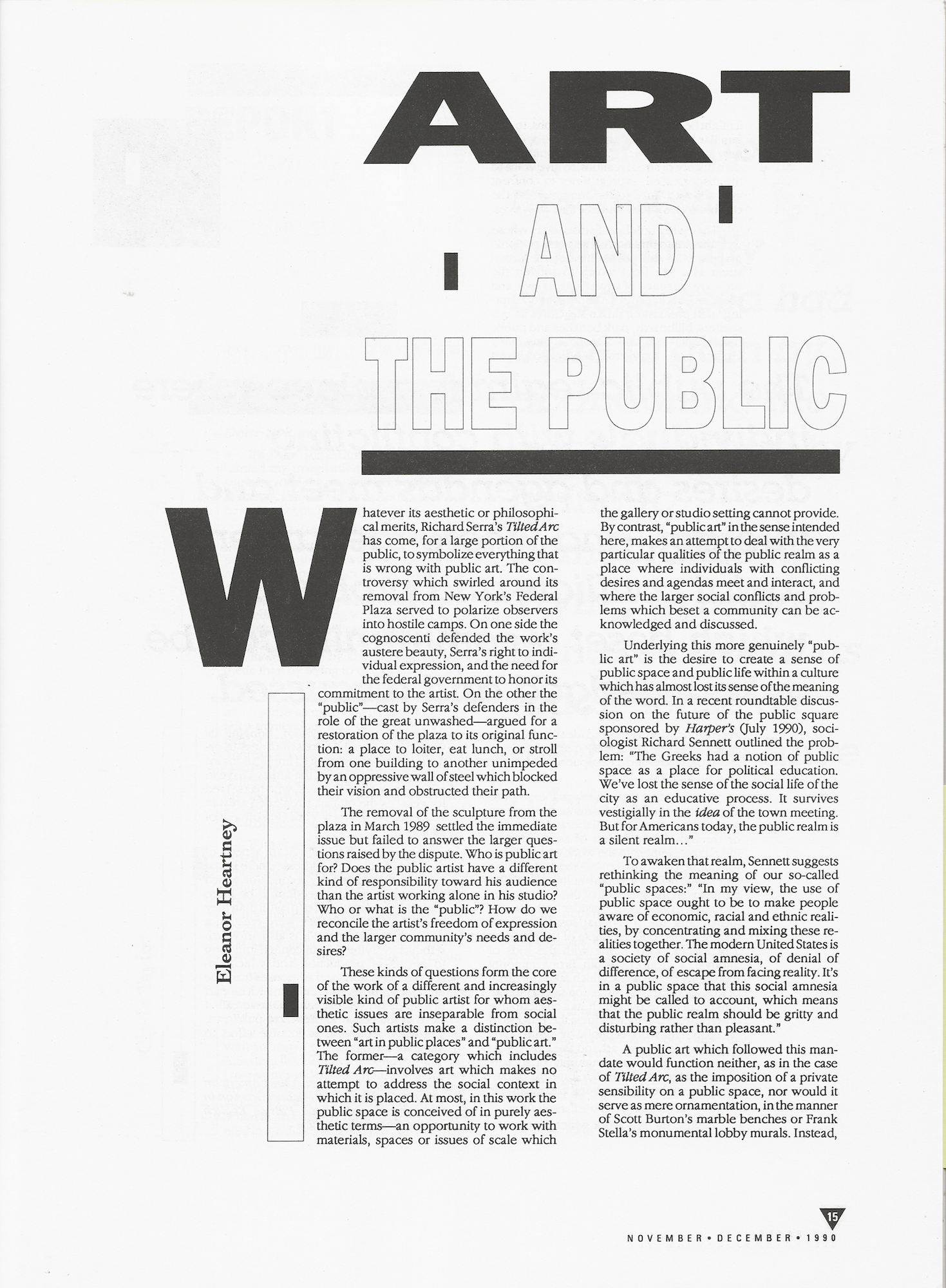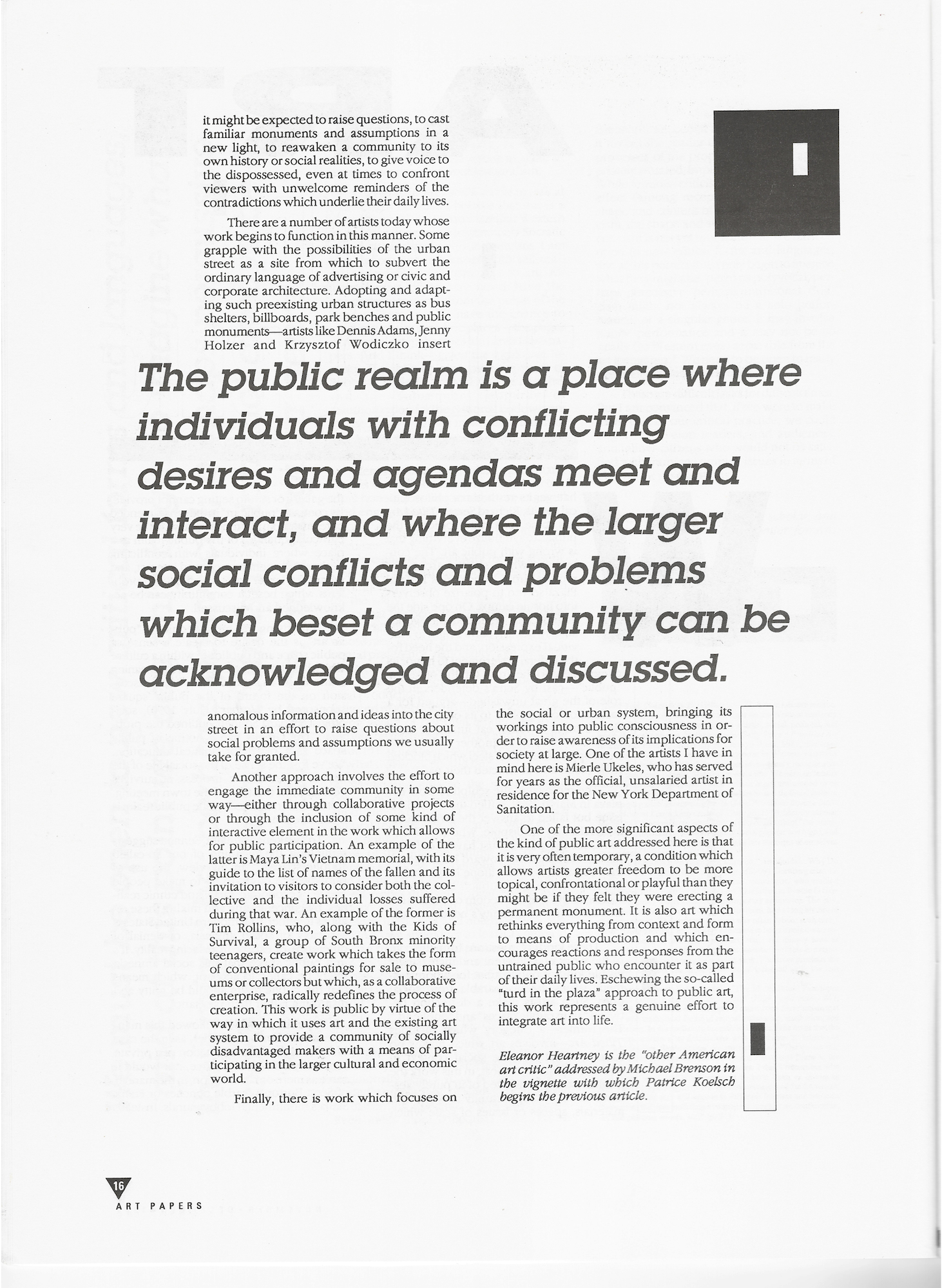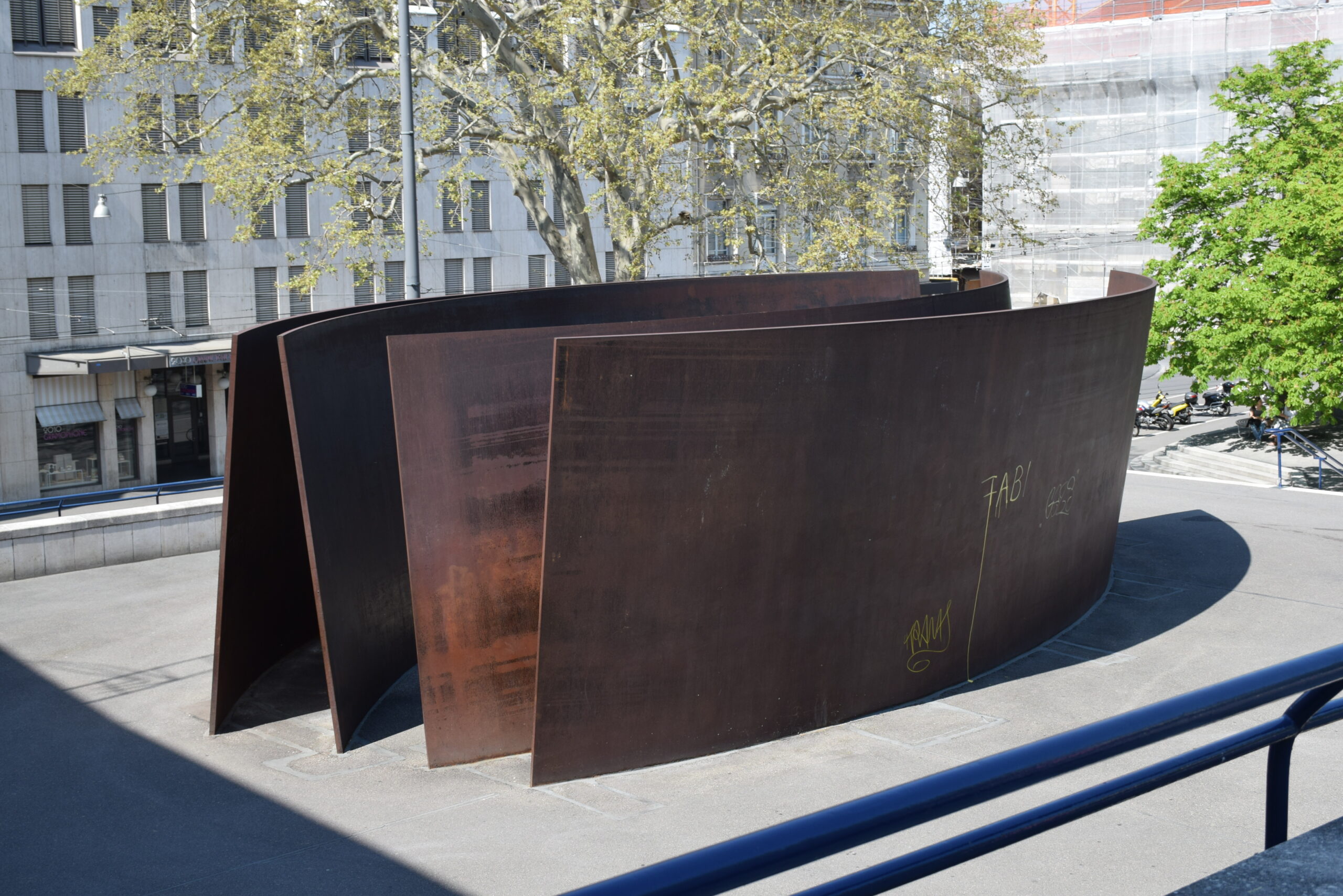Art and The Public
Jenny Holzer, Projections, 2008 [courtesy of Wikimedia Commons]
Share:
This essay was originally published in ART PAPERS November/Decmber 1990, Vol 14, Issue 6.
Whatever its aesthetic or philosophical merits, Richard Serra’s Tilted Arc has come, for a large portion of the public, to symbolize everything that is wrong with public art. The controversy which swirled around its removal from New York’s Federal Plaza served to polarize observers into hostile camps. On one side the cognoscenti defended the work’s austere beauty, Serra’s right to individual expression, and the need for the federal government to honor its commitment to the artist. On the other the “public—-cast by Serra’s defenders in the role of the great unwashed—argued for a restoration of the plaza to its original function: a place to loiter, eat lunch, or stroll from one building to another unimpeded by an oppressive wall of steel which blocked their vision and obstructed their path.
The removal of the sculpture from the plaza in March 1989 settled the immediate issue but failed to answer the larger questions raised by the dispute. Who is public art for? Does the public artist have a different kind of responsibility toward his audience than the artist working alone in his studio? Who or what is the “public”? How do we reconcile the artist’s freedom of expression and the larger community’s needs and desires?
Richard Serra, Intersections, 1992, weatherproof steel, 13 x 52 x 2 feet [courtesy of Wikimedia Commons]
These kinds of questions form the core of the work of a different and increasingly visible kind of public artist for whom aesthetic issues are inseparable from social ones. Such artists make a distinction between “art in public places” and “public art.” The former—a category which includes Tilted Arc—involves art which makes no attempt to address the social context in which it is placed. At most, in this work the public space is conceived of in purely aesthetic terms—an opportunity to work with materials, spaces or issues of scale which the gallery or studio setting cannot provide. By contrast, “public art” in the sense intended here, makes an attempt to deal with the very particular qualities of the public realm as a place where individuals with conflicting desires and agendas meet and interact, and where the larger social conflicts and problems which beset a community can be acknowledged and discussed.
Underlying this more genuinely “public art” is the desire to create a sense of public space and public life within a culture which has almost lost its sense of the meaning of the word. In a recent roundtable discussion on the future of the public square sponsored by Harper’s (July 1990), sociologist Richard Sennett outlined the problem: “The Greeks had a notion of public space as a place for political education. We’ve lost the sense of the social life of the city as an educative process. It survives vestigially in the idea of the town meeting. But for Americans today, the public realm is a silent realm…”
To awaken that realm, Sennett suggests rethinking the meaning of our so-called “public spaces:” “In my view, the use of public space ought to be to make people aware of economic, racial and ethnic realities, by concentrating and mixing these realities together. The modern United States is a society of social amnesia, of denial of difference, of escape from facing reality. It’s in a public space that this social amnesia might be called to account, which means that the public realm should be gritty and disturbing rather than pleasant.”
A public art which followed this mandate would function neither, as in the case of Tilted Arc, as the imposition of a private sensibility on a public space, nor would it serve as mere ornamentation, in the manner of Scott Burton’s marble benches or Frank Stella’s monumental lobby murals. Instead, it might be expected to raise questions, to cast familiar monuments and assumptions in a new light, to reawaken a community to its own history or social realities, to give voice to the dispossessed, even at times to confront viewers with unwelcome reminders of the contradictions which underlie their daily lives.
There are a number of artists today whose work begins to function in this manner. Some grapple with the possibilities of the urban street as a site from which to subvert the ordinary language of advertising or civic and corporate architecture. Adopting and adapting such preexisting urban structures as bus shelters, billboards, park benches and public monuments—artists like Dennis Adams, Jenny Holzer and Krzysztof Wodiczko insert anomalous information and ideas into the city street in an effort to raise questions about social problems and assumptions we usually take for granted.
Another approach involves the effort to engage the immediate community in some way—either through collaborative projects or through the inclusion of some kind of interactive element in the work which allows for public participation. An example of the latter is Maya Lin’s Vietnam memorial, with its guide to the list of names of the fallen and its invitation to visitors to consider both the collective and the individual losses suffered during that war. An example of the former is Tim Rollins, who, along with the Kids of Survival, a group of South Bronx minority teenagers, create work which takes the form of conventional paintings for sale to museums or collectors but which, as a collaborative enterprise, radically redefines the process of creation. This work is public by virtue of the way in which it uses art and the existing art system to provide a community of socially disadvantaged makers with a means of participating in the larger cultural and economic world.
Finally, there is work which focuses on the social or urban system, bringing its workings into public consciousness in order to raise awareness of its implications for society at large. One of the artists I have in mind here is Mierle Ukeles, who has served for years as the official, unsalaried artist in residence for the New York Department of Sanitation.
Maya Lin, Vietnam Veterans Memorial, 1982, granite [courtesy of Wikimedia Commons]
One of the more significant aspects of the kind of public art addressed here is that it is very often temporary, a condition which allows artists greater freedom to be more topical, confrontational or playful than they might be if they felt they were erecting a permanent monument. It is also art which rethinks everything from context and form to means of production and which encourages reactions and responses from the untrained public who encounter it as part of their daily lives. Eschewing the so-called “turd in the plaza” approach to public art, this work represents a genuine effort to integrate art into life.
Eleanor Heartney is the “other American art critic” addressed by Michael Brenson in the vignette with which Patrice Koelsch begins the previous article.




